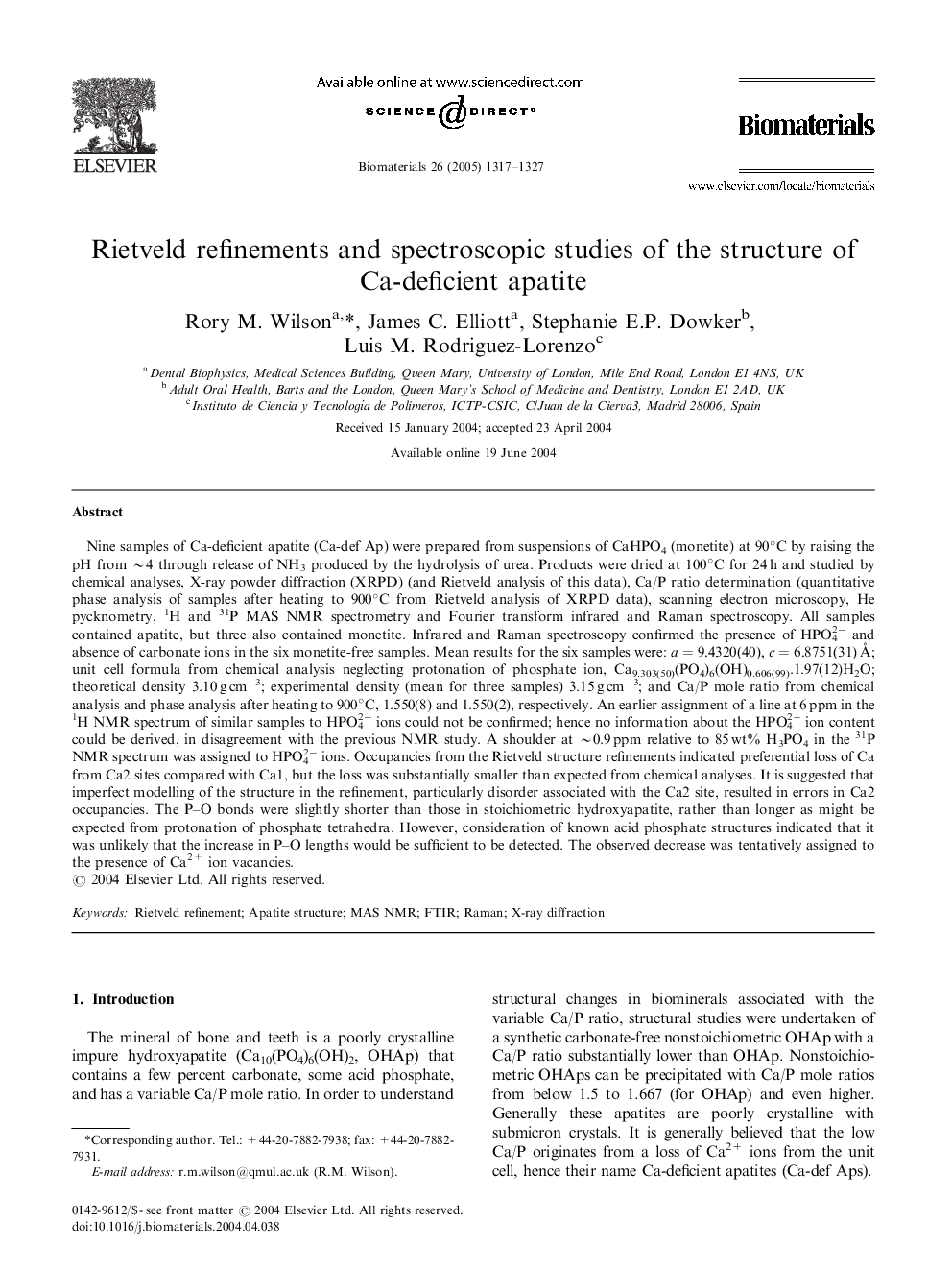| Article ID | Journal | Published Year | Pages | File Type |
|---|---|---|---|---|
| 10230106 | Biomaterials | 2005 | 11 Pages |
Abstract
Nine samples of Ca-deficient apatite (Ca-def Ap) were prepared from suspensions of CaHPO4 (monetite) at 90°C by raising the pH from â¼4 through release of NH3 produced by the hydrolysis of urea. Products were dried at 100°C for 24 h and studied by chemical analyses, X-ray powder diffraction (XRPD) (and Rietveld analysis of this data), Ca/P ratio determination (quantitative phase analysis of samples after heating to 900°C from Rietveld analysis of XRPD data), scanning electron microscopy, He pycknometry, 1H and 31P MAS NMR spectrometry and Fourier transform infrared and Raman spectroscopy. All samples contained apatite, but three also contained monetite. Infrared and Raman spectroscopy confirmed the presence of HPO42â and absence of carbonate ions in the six monetite-free samples. Mean results for the six samples were: a=9.4320(40), c=6.8751(31)Ã
; unit cell formula from chemical analysis neglecting protonation of phosphate ion, Ca9.303(50)(PO4)6(OH)0.606(99).1.97(12)H2O; theoretical density 3.10 g cmâ3; experimental density (mean for three samples) 3.15 g cmâ3; and Ca/P mole ratio from chemical analysis and phase analysis after heating to 900°C, 1.550(8) and 1.550(2), respectively. An earlier assignment of a line at 6 ppm in the 1H NMR spectrum of similar samples to HPO42â ions could not be confirmed; hence no information about the HPO42â ion content could be derived, in disagreement with the previous NMR study. A shoulder at â¼0.9 ppm relative to 85 wt% H3PO4 in the 31P NMR spectrum was assigned to HPO42â ions. Occupancies from the Rietveld structure refinements indicated preferential loss of Ca from Ca2 sites compared with Ca1, but the loss was substantially smaller than expected from chemical analyses. It is suggested that imperfect modelling of the structure in the refinement, particularly disorder associated with the Ca2 site, resulted in errors in Ca2 occupancies. The P-O bonds were slightly shorter than those in stoichiometric hydroxyapatite, rather than longer as might be expected from protonation of phosphate tetrahedra. However, consideration of known acid phosphate structures indicated that it was unlikely that the increase in P-O lengths would be sufficient to be detected. The observed decrease was tentatively assigned to the presence of Ca2+ ion vacancies.
Related Topics
Physical Sciences and Engineering
Chemical Engineering
Bioengineering
Authors
Rory M. Wilson, James C. Elliott, Stephanie E.P. Dowker, Luis M. Rodriguez-Lorenzo,
